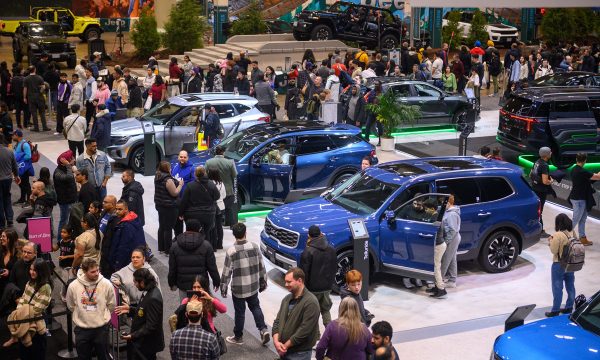China is racing ahead of other countries in the global shift to electric vehicles, while Europe adjusts its strategy and the United States sees its EV adoption timeline slip to 2039, according to the latest EY Mobility Lens Forecaster.
EY used an AI-powered model to project light vehicle sales through 2050 across China, Europe, and the U.S. In looking at these markets, its data shows battery electric vehicle sales are anticipated to surpass 50% by 2034, while hybrids and plug-in hybrids will maintain a 30%-plus share through 2036.
“The EV transition is advancing — but unevenly,” said Constantin M. Gall, EY’s Global Aerospace, Defense & Mobility Leader, in a statement. “The U.S. faces policy uncertainty, high costs, and infrastructure gaps. Europe is on a steady recovery path under strict emissions targets. (And) China benefits from stable policy and a robust EV ecosystem.”
Gall added that hybrid technologies highlight their importance by bridging the gap to full electrification.
Data from the EY Forecaster shows new energy vehicles (BEVs plus PHEVs) are expected to reach 50% by 2025, then surge past 90% by 2034. And BEVs are projected to make up over 50% of China’s light vehicle sales by 2033. That last one comes thanks to lower costs and supportive policies, including the new VII vehicle emission standards.
For the U.S. a short-term spike in EV sales is expected this year, as consumers rush to benefit from tax credits before they expire this month. “But with incentives ending, new import tariffs, and legislative uncertainty — including the potential impact of ‘the One Big Beautiful Bill’ — growth is likely to slow,” said EY.
For this reason, the U.S. is projected to reach 50% BEV adoption five years later than originally forecasted — now by 2039. And hybrids are expected to peak at 34% of sales by 2034.
As for Europe, EY said economic pressures, reduced incentives, and softer emissions penalties have lowered BEV growth through 2027. However, stricter CO₂ limits and more affordable models may lead to a rebound. EY expects BEVs to surpass 50% of the market share by 2032.
“The near- to mid-term future will feature a diverse mix of powertrains, shaped by regulatory shifts, tariffs, and evolving consumer behaviour. What’s clear is that e-mobility will remain central to the future of transportation,” said Gall.











